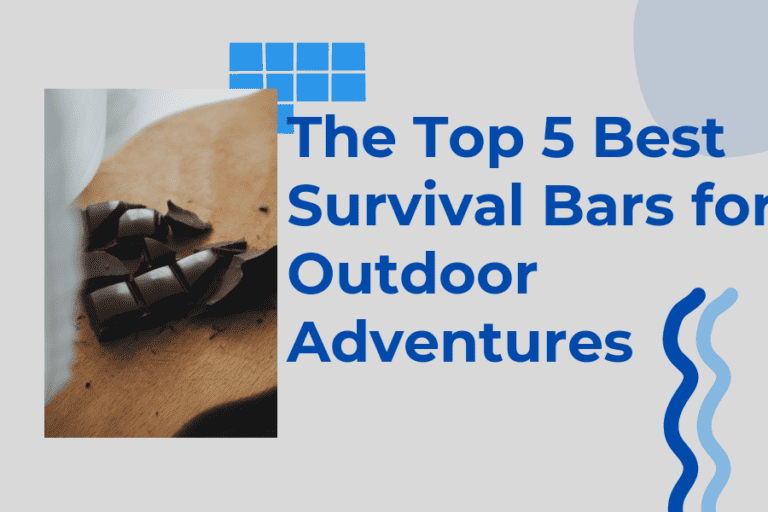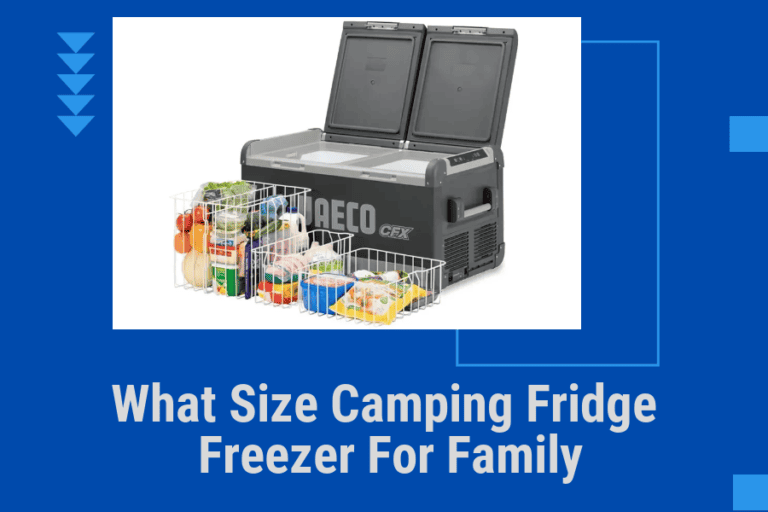Bug Out Bag Essentials: The Ultimate Guide
You’ve got to be ready for emergencies and bug out bag is a must-have. It’s like carrying your spare keys, the car, and an extra set of clothes in case you get rained on or have to change into something else when you run into trouble. If there’s no way to communicate with family or friends and you’re stuck out in the woods, having your bug out bag will come in handy.
Definition of bug out bag
When disaster strikes, you’ll need to get out as soon as possible.
You might not have time to prepare a backpack stocked with food and provisions; therefore, a bug-out bag can act as an emergency kit filled with survival gear and other essential items to help you through sudden (and dangerous) events.
Bug-out bags vary among survivalists but in general they contain key essential items such as a first aid kit, chargers, water bottle, hygiene supplies and of course the most important element: your set of keys!
Because of its contents bug-out bags are also known by other names including 72 Hour Kit or Emergency Preparedness Kit.
How to Choose Your Bug Out Bag
Bug out bags or “go bags” are emergency kits that help you survive outdoors if you have to leave your home in a hurry.
They come in many shapes and sizes, so it can be tough to choose one. Some of the factors to consider when picking a bag include how you intend to use the kit and where you’ll be going during an emergency situation.
If your bug out plan involves evacuating on foot, then backpack size matters – but only up to a certain point. Your bug out bag should accommodate all of the supplies necessary for several days at least 72 hours is ideal – but there are limits as to how much weight most people can carry on their backs without injuring themselves or becoming exhausted quickly..
Bugging out by vehicle makes planning easier because larger backpacks aren’t practical over long distances or difficult terrain . If bugging-out by car isn’t an option for your family (maybe yours doesn’t run) then the issue of weight becomes more important.
How to Setup Your 72-Hour Bug Out Bag
Water
Water is the foundation of survival. You can live weeks without food but only a few days without water, so I highly recommend packing at least two different methods for treating water and carrying them in every bug out bag you build.
Boiling water for 10 minutes is an option but it’s not always convenient or practical to carry around a camp stove just to boil some water. Water purification tablets are more compact, reliable and easier to use than boiling as well.
Food
While some survival experts recommend carrying more equipment than this, it is really overkill for most people.
A large metal pot can be used as a container to hold water or food and as a cooking vessel; you can use rocks heated in the fire to cook in it.
The spork (spoon/fork) is handy for eating out of the pot without burning your fingers, but you could also eat directly from the pan with no utensils if necessary.
Useful additions to this kit are matches in a waterproof case and an alcohol stove (the kind that uses denatured alcohol).
The matches will allow you to start fires even when wet (assuming they aren’t soaked), which may not be possible with other means of starting fires such as flint and steel or magnifying glass.
Alcohol stoves work better at higher elevations where air pressure is lower- they require less fuel than solid fuel tablets like Esbit do and have fewer issues with residue buildup inside them so they’re
Shelter And Clothing
In addition to the above, you should also carry a small emergency blanket in your kit.
Parachute material blankets are cheap and work like a charm as an additional insulator if needed or can be used as a makeshift shelter. They fit easily into any pocket, and weigh next to nothing.
You will not have time when caught out after dark to build anything elaborate. Your best bet is something that takes only seconds to deploy yet provides sufficient protection from wind and rain.
Even going without is better than being exposed; hypothermia can set in within minutes of exposure at night even during warm weather conditions, so it’s critical that you get some form of protection overhead quickly — covering yourself with leaves or grass won’t cut it!
The military poncho has grommets positioned along its edges so that you can secure it over your head using rope (as described below) and use it as an impromptu tarp tent for warmth on cold nights.
Fire
When you’re out in the wilderness, especially on a camping trip with friends or family, there is nothing that says “get together” like starting a campfire.
But having to gather wood and lighting your fire can be an arduous process if you don’t have the right tools.
Pack some tinder for lighting a fire.
First Aid
First aid kits come in a variety of shapes and sizes, so you can tailor them to your needs.
Some people like to build their own first aid kits from scratch; others prefer premade kits that are available at many outdoor retail stores.
Whichever type you choose, it’s important that the kit include essential items such as
- An adhesive bandage that sticks well but is still easy to remove if necessary (such as Adventure Medical Kits’ 1″ x 3″ Adhesive Bandages)
- Antiseptic wipes or ointment
- Pain reliever
- Gauze pads for absorbing blood or fluids and covering wounded areas (you’ll want more than one-ply dressing material)
- Butterfly closures for sealing lacerations over gauze pads on larger wounds
- Sutures or steri-strips (plastic strips used to close cuts) if there is any possibility at all of deep wound penetration beneath the skin surface
- Latex gloves with no powder residue in order to prevent allergic reactions among those who might need treatment.
Tools
Why is this a better option as multi-tool? Because you can use it to fix, cut, and otherwise perform useful tasks with minimal effort.
The only downside is that you’ll probably lose it – so make sure to keep an eye out for one. A good choice would be the Leatherman Wave.
This multi-tool has everything you need in one place: pliers , scissors , knife blade , saw blade , bottle opener.
It also has two screwdriver bits (flathead and Phillips), two 7/64″ hex bits, a ruler on the back of the handle, and even a carabiner hook on the end of the tool.
The Leatherman Wave Multi-Tool I own was made in Portugal; however, they are now manufactured in China as well.
The quality control seems to have decreased since my first generation model – but I still like them enough to justify their cost – especially when compared with other options.
Lighting
I don’t list a headlamp or any kind of hands-free flashlight. The reason is that if you need your hands free while working on something, it means you’ll have to set the light down at some point—and then what happens when you need it again?
A better solution is to carry a separate small flash unit (like an LED Lenser) that can be clipped onto clothing and retrieved when needed.
I personally carry the following light sources: WUBEN Flashlight,1200 High Lumens LED light,IP68 Water-Resistant 6 Light Modes Pocket-Sized EDC Flash Light.
Communications
Having a fully charged cell phone battery is very important. Additionally, having extra charged batteries for your mobile phone is helpful when there isn’t enough power in the line you are currently using.
Therefore, you will need to bring along the appropriate cable and power source.
You may want to include a solar charger with multiple sets of AA rechargeable batteries so that you can charge your phone while in the field if needed.
The amount of time required for each session depends on how much power is available from the source (solar panels, hand-crank generator) as well as what type of device is being charged (cellphone or other electronic equipment).
Protection and Self-Defense
Far too many people die every year because they are unprepared to protect themselves. The right self-defense weapon can be the difference between life and death.
A firearm is a formidable tool for protection, but it’s not your only option. Other weapons of self-defense include knives, machetes, and walking sticks.
Even something as simple as pepper spray can give you an edge in dangerous situations in which lethal force isn’t necessary or appropriate (for example: if a home intruder asks you to hand over valuables).
You should expect that anyone who chooses a handgun for self-protection will have to invest some time and money into training so he or she becomes proficient with it. If you cannot afford the cost of training classes then don’t buy a gun until you’ve saved up enough money.
Get A Bag With Space
If you have a bug out bag with lots of features, you will be much more organized.
Organization can mean the difference between life and death, especially in a severe situation. Apart from comfort and fit, the most important consideration when choosing best bug out bag is the space provided and the number of compartments.
You don’t want to make it too cumbersome or heavy but you do want to ensure that all essential survival items are kept close at hand so they can be located in seconds if needed.
The fewer times you have to go digging through your pack for something vital like food or water means less time spent fumbling around with gear which could potentially cause injuries that may result in a slow death by infection later on down the road; just take care not to overdo it either though because there is such thing as carrying too much weight!





